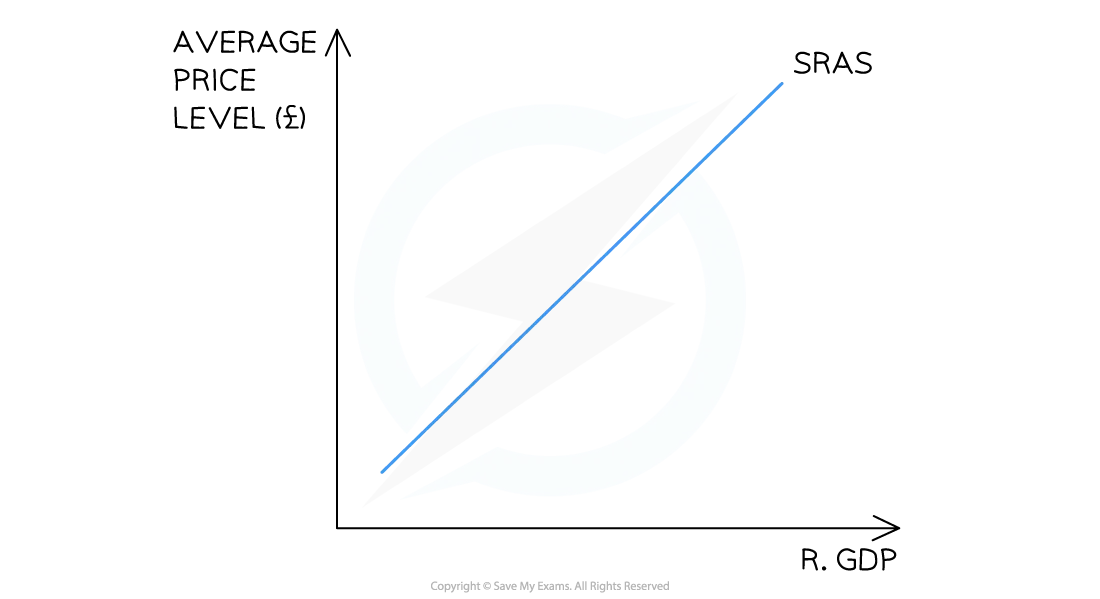An Introduction to Short-run Aggregate Supply (SRAS)
- Aggregate supply is the total supply of goods/services produced within an economy at a specific price level at a given time
Diagram: Short-run Aggregate Supply (SRAS) Curve

The SRAS is upward-sloping. As price levels rise, firms are incentivised to supply more
Diagram analysis
- The SRAS curve is upward-sloping due to two reasons
- The aggregate supply is the combined supply of all individual supply curves in an economy which are also upward-sloping
- As real output increases, firms have to spend more to increase production e.g. wage bills will increase
- Increased costs result in higher average prices



